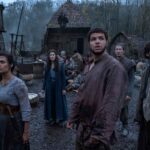In this weekly series, we chronicle the long road undertaken by the Marvel Cinematic Universe movies to arrive at Avengers: Infinity War. We introspect and discuss the movies from a critical and commercial standpoint while also considering the development efforts that went behind them. These articles may be occasionally sprinkled with spoilers so please make sure to skip the relevant sections when reading.
This post is about the 2016 movie Captain America: Civil War, the thirteenth chapter in the Marvel Cinematic Universe. To check out other entries in our Road to Infinity War series, click here.
People often lament that studio interference ruins movies. The conventional wisdom goes that studios care more about inflating profits than pioneering storytelling and view their movies as giant extravagant commercials to drive merchandise sales. Every now and then though, there are exceptions to the rule, sometimes within the same studio at different points in time. Take the case of Marvel Studios and the thirteenth movie in its Marvel Cinematic Universe or alternatively, the third installment in its Captain America sub-franchise. Directors Anthony & Joe Russo of The Winter Soldier fame, wanted to adapt the Madbomb storyline in the comics for this movie, which would have had Cap teaming up with Bucky to fight a hoard of unstoppable individuals zombified as a result of the bomb’s detonation. To hit an emotional nerve, some of these zombies would be people they knew i.e. other superheroes. It was Marvel Studios President Kevin Fiege who later on pushed the brothers to adapt the Civil War storyline and tailor it to the shared universe’s needs once plot elements started solidifying in Avengers: Age of Ultron. Can you imagine the movie we would’ve ended up with had Fiege not intervened? This isn’t to necessarily say that the outcome would’ve been horrible; it just wouldn’t have had the emotional stakes that Civil War ended up having.
Captain America: Civil War works, when it has multiple reasons not to. The movie already has 10 super-powered characters carried over from previous MCU installments and yet brings two more into the fray, one of which is a superhero that has had two incarnations to this point while the other is a hero with a rich lore that hasn’t been explored in live-action ever. This is separate to the multiple antagonists the film juggles with and, coupled with the supporting characters at play, one could argue it has more people to handle than some Avengers movies themselves. It has a plot dealing with collateral damage that only weeks before its release went wrong in another superhero movie Batman v Superman. And it’s running time stretches to 2 hours 27 minutes which implies lesser showings and expects more patience of its audience. That’s a lot to play around with.
And yet, Captain America: Civil War shines bright enough to leave some really good Marvel movies feel like empty spectacles. Well, maybe not. That’s just me exaggerating. But this movie has one of the strongest emotional arcs in the entirety of the MCU and takes its characters and the roster of Avengers to a difficult place, one from which it might be infinitely more difficult to return. It fractures the Avengers from within on the issue of whom to side with and does that by producing compelling arguments for each Avenger’s choice. The narrative is crafted with such meticulousness that not once do you feel someone belongs where they don’t or makes a choice they should have not. And when the antagonists’ plan is revealed, it makes all the more sense as it shows that things happening in the built-in universe will not be taken lightly and will have ramifications that will echo across several movies.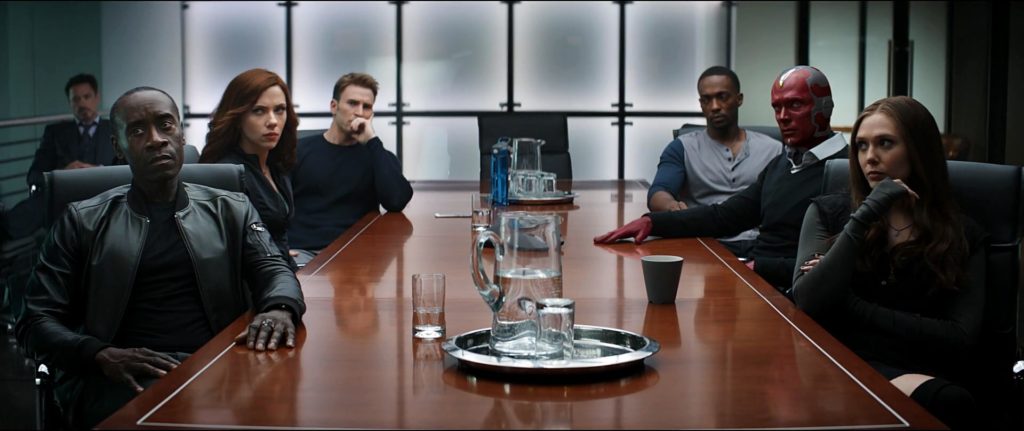 Civil War is adapted from the 2006-2007 comic-book story arc of the same name by Mark Millar, albeit with several changes to the source material. One of the key differentiating points in comics has been the secret identity of superheroes where, unlike in the movies, people aren’t aware who most of these heroes are in person. The comic thus, centers on a Superhero Registration Act that requires all heroes to reveal themselves and register their identities with the government. Since secret identities were eschewed in the MCU the moment Tony Stark announced himself as Iron Man at the end of the first movie, the cinematic-adaptation keeps the genesis of the act and spins a different narrative around it. In the movie then, the central conflict is about the United Nations demanding accountability from the superheroes in the wake of the collateral damage they leave behind when engaging in world-saving acts. Representing the UN is previously General now Secretary of State Thaddeus Ross who makes a return from the forgotten film The Incredible Hulk in what amounts to a restrained yet nuanced performance. The Sokovia Accords are forged, named after the mass destruction in Avengers: Age of Ultron, that require every superhero to either sign or risk being branded a fugitive. The government effectively oversees the Avengers as another department like the CIA, the FBI or the NSA and decides when they need to be deployed.
Civil War is adapted from the 2006-2007 comic-book story arc of the same name by Mark Millar, albeit with several changes to the source material. One of the key differentiating points in comics has been the secret identity of superheroes where, unlike in the movies, people aren’t aware who most of these heroes are in person. The comic thus, centers on a Superhero Registration Act that requires all heroes to reveal themselves and register their identities with the government. Since secret identities were eschewed in the MCU the moment Tony Stark announced himself as Iron Man at the end of the first movie, the cinematic-adaptation keeps the genesis of the act and spins a different narrative around it. In the movie then, the central conflict is about the United Nations demanding accountability from the superheroes in the wake of the collateral damage they leave behind when engaging in world-saving acts. Representing the UN is previously General now Secretary of State Thaddeus Ross who makes a return from the forgotten film The Incredible Hulk in what amounts to a restrained yet nuanced performance. The Sokovia Accords are forged, named after the mass destruction in Avengers: Age of Ultron, that require every superhero to either sign or risk being branded a fugitive. The government effectively oversees the Avengers as another department like the CIA, the FBI or the NSA and decides when they need to be deployed.
This leads to a schism between the film’s central characters Steve Rogers and Tony Stark with each ending up on the opposite ends of the decision spectrum, for their own personal and truly reasonable reasons. Stark was largely responsible for the creation of Ultron and even though he helped stop it, the guilt of what it brought upon citizens still weighs him down heavily. His feelings are only exacerbated when a woman named Miriam Sharpe blames him for the loss of his son Charlie Spencer, a bright MIT student who succumbed to the destruction in Sokovia. Convinced that he needs oversight or someone to watch his back he sides with Ross and pushes for the Accords to be enacted. At the other end is Steve Rogers who has seen how the World Security Council launched a nuke into Manhattan and how S.H.I.E.L.D. ended up being secretly infiltrated by HYDRA without anyone getting wind of it. Having been through his share of experiences with corruption at the top, he’s lost faith in people running organizations and is unwilling to surrender control to yet another one, not even the U.N.. The fact that both their viewpoints hold validity in the face of the stuff they’ve been through in their respective journeys is what makes this such a brilliantly balanced conflict.
What’s even interesting is that had Civil War been made when we started out in the MCU, both of these icons would’ve switched sides. Tony Stark started out in the first movie as a hardcore industrialist manufacturing weapons who shut down that division of Stark Industries and transitioned to perfecting the Iron Man suit. And yet, in Iron Man 2, he vehemently refused to hand it over to the government, justifying how he had successfully “privatized world peace” while metaphorically spitting in the face of Senator Stern. At the other end, we had scrawny Steve Rogers who was enhanced to the peak of human perfection in Captain America: The First Avenger and who lived for nothing but to serve his government, follow orders and play a part in the war against the Nazis. A guy like that would’ve killed to be a part of a UN overseen Accords. And yet here we are, twelve movies in and both our heroes have swapped stances due to the experiences they underwent leading up to this movie.
But what about the others? What exactly influences their choices? Writers Christopher Markus and Stephen McFeely really dig into each of these personalities and come up with convincing reasons for them to choose the sides they do. Some are obvious. For instance, it’s pretty much a given that Falcon and Bucky would side with Cap, as would Rhodey and Vision with Stark (being essentially his AI J.A.R.V.I.S.) although Vision deduces and justifies his stance through causality. Wanda sides with Rogers due to the events at the beginning of the movie where she is unable to contain an explosion and inadvertently ends up blowing it off a building containing Wakandan humanitarian workers. She and Rogers both feel responsible for failing to contain the situation with Rumlow, now going by Crossbones, who detonated an explosion in an unsafe area. With Scott Lang having successfully fought Falcon in Ant-Man, he’s called upon for help and is more than willing to aid an Avenger. The final catch for Rogers is Hawkeye who rather unexpectedly and quickly shows up for help after being summoned by Cap. The only legitimate surprise is Black Widow who sides with Stark as a compromise – she’d rather be able to serve as an Avenger in some limited capacity than not being able to serve at all, even though she harbors no ill-will towards Rogers.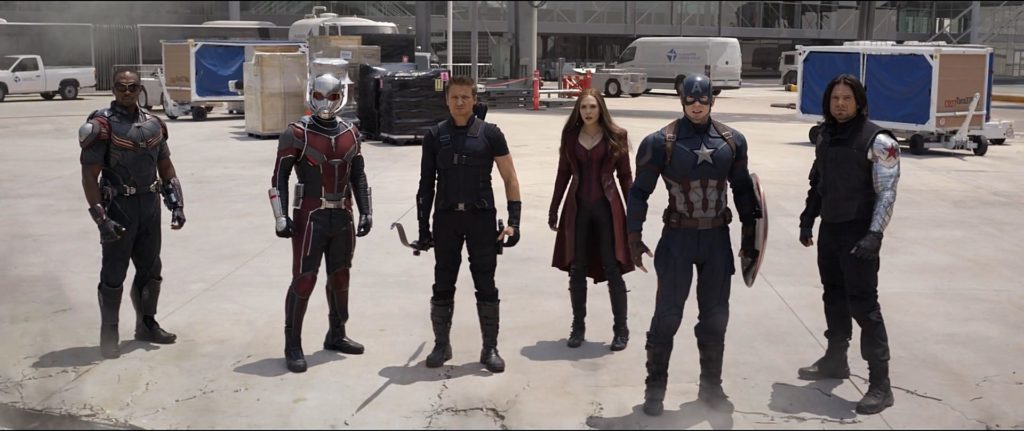 Stark meanwhile gains two additional allies which bring our new heroes into the fold. The first of these is Prince T’Challa of Wakanda, who gets involved in the conflict after Bucky Barnes is spotted walking out of an explosion in the United Nations conference killing his father T’Chaka. He takes on the mantle of the Black Panther, passed on from generations to generations and swears vengeance upon his father’s death. An enemy’s enemy is thy friend, landing the Panther on the side of the Iron Man. The other hero is a much more familiar face and gets involved when Stark flies to Queens to recruit a young Peter Parker as his wild card. It’s a desperate movie really and with Stark given 36 hours to apprehend Rogers, he’ll need all the allies he can get. With Thor and Banner absconding and the others picked up by Rogers, he’ll settle for whatever is left.
Stark meanwhile gains two additional allies which bring our new heroes into the fold. The first of these is Prince T’Challa of Wakanda, who gets involved in the conflict after Bucky Barnes is spotted walking out of an explosion in the United Nations conference killing his father T’Chaka. He takes on the mantle of the Black Panther, passed on from generations to generations and swears vengeance upon his father’s death. An enemy’s enemy is thy friend, landing the Panther on the side of the Iron Man. The other hero is a much more familiar face and gets involved when Stark flies to Queens to recruit a young Peter Parker as his wild card. It’s a desperate movie really and with Stark given 36 hours to apprehend Rogers, he’ll need all the allies he can get. With Thor and Banner absconding and the others picked up by Rogers, he’ll settle for whatever is left.
All this while, a certain Helmut Zemo has been lurking behind the scenes, scheming to get access to the Avengers, particularly Bucky Barnes. Only he’s no ghost and we actually get to see quite a lot of his plan unfold on screen and realize how focused he is upon getting what he seeks. He pulls the strings and orchestrates a series of events that lead to an intensely personal third act that sees Rogers, Barnes and Stark join forces in a hideout in Siberia to take down what are presumably the last of the other Winter Soldiers. Instead, what Zemo unleashes is a horrific revelation from which there’s no turning back for the trinity. And this introspective on Civil War would be incomplete without discussing this vital climactic beat so for those who’ve yet to see the movie, please skip the next paragraph.Back when he was operating by the code name Winter Soldier, Bucky carried out assassination missions for HYDRA as a brainwashed assassin. In one of these missions, he ended up killing Stark’s parents, the footage of which Zemo makes Stark see. It sends Stark in a rage and, angry at Rogers for concealing this, he beats them to the ground. This is a rare example of a conflict that’s so expertly staged you’re unsure which side you’re on. At one end, Cap rightfully believes that whatever Bucky did was the result of his brainwashing and wasn’t in his control. At the other end, Stark doesn’t really care whether Bucky was his usual self, the fact that he did it, that he remembered it and that Rogers hid it from it together constitute a betrayal he can’t get away from. The end result is a fight driven more by character and narrative than effects and a conflict where it’s hard to fault anyone’s logic. It’s an intensely personal climax that ends in a dramatic fashion.
If one were to pinpoint the strength of Civil War, it’s in the combination of writing and direction, especially the writing. Writers Markus & McFeely team-up and really dig beneath each of the characters and all of the MCU movies thus far to construct a narrative that’s a solid payoff for everything we’ve been through at this point. The seamless nature in which the sides come together is again thanks to the fine writing as well as brilliant directing by the Russos who once again, let all the character beats play out gracefully as they rush at times with their action sequences, which remains one of my few gripes with the movie. This is a movie of and driven by character with bits and pieces of action thrown in for good measure and to great effect. The scenes are spaced out excellently and the film’s almost two and a half hour running time allows room for the characters to breathe.
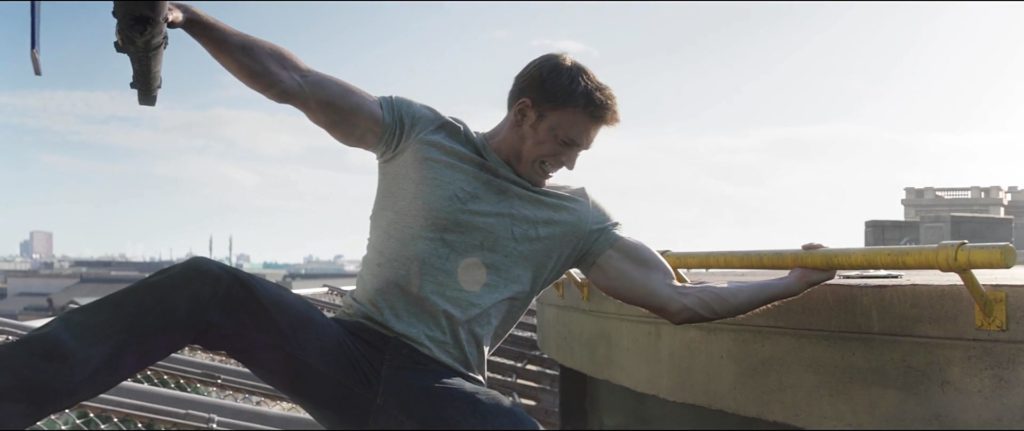 New characters Black Panther and Spider-Man became instant hits with audiences and deservedly so. Played by Chadwick Boseman in a role that he would further expand upon tremendously in his solo outing, T’Challa blends into the picture and undergoes a transition from Prince to Panther under dire circumstances. He also goes through a strong and complete arc from being consumed by vengeance to learning forgiveness. The other favorite played by Tom Holland bowls you over with a portrayal of the web-slinger never before seen on the big screen and yet, as true to the Amazing Spider-Man comics as you wanted. Keeping things tight and subtle, the Russos refrain from getting into the now familiar origin story and instead hint at it through words, expressions and implications. Thus, instead of getting “With great power, comes great responsibility” you get “When you can do the things I do, but you don’t, and then bad things happen, it’s on you”, clearly alluding to how he was unable to save his Uncle Ben by not using his powers when he had the chance. Holland himself is infectious with energy and the nineteen-year old makes Spider-Man come across as a star-struck kid in awe of these super-powered people he’s supposed to fight with and against. It’s a heartwarming performance.The action is pretty amazingly all driven by storytelling. Rarely will you have an action sequence set in a location comprising of movies that seem contrived. Instead, all beats feel organic to the plot and you get the sense that the action breaks out exactly at the moments it’s supposed to break out. And there’s plenty of it. There’s a really visceral and intense chase sequence between Bucky, Panther and Cap in which Panther is after Bucky for killing his father and Cap is after both Panther, to keep him from killing Bucky and also after Bucky himself to get him off the grid. The opening act is another intense and hurried action piece that employs loads of shaky-cam to give a sense of being present on location (although personally, I wasn’t a big fan of those shaky cam sequences). And without giving anything away, the climax is one of the most personal fights ever to grace a big-budget superhero film.
New characters Black Panther and Spider-Man became instant hits with audiences and deservedly so. Played by Chadwick Boseman in a role that he would further expand upon tremendously in his solo outing, T’Challa blends into the picture and undergoes a transition from Prince to Panther under dire circumstances. He also goes through a strong and complete arc from being consumed by vengeance to learning forgiveness. The other favorite played by Tom Holland bowls you over with a portrayal of the web-slinger never before seen on the big screen and yet, as true to the Amazing Spider-Man comics as you wanted. Keeping things tight and subtle, the Russos refrain from getting into the now familiar origin story and instead hint at it through words, expressions and implications. Thus, instead of getting “With great power, comes great responsibility” you get “When you can do the things I do, but you don’t, and then bad things happen, it’s on you”, clearly alluding to how he was unable to save his Uncle Ben by not using his powers when he had the chance. Holland himself is infectious with energy and the nineteen-year old makes Spider-Man come across as a star-struck kid in awe of these super-powered people he’s supposed to fight with and against. It’s a heartwarming performance.The action is pretty amazingly all driven by storytelling. Rarely will you have an action sequence set in a location comprising of movies that seem contrived. Instead, all beats feel organic to the plot and you get the sense that the action breaks out exactly at the moments it’s supposed to break out. And there’s plenty of it. There’s a really visceral and intense chase sequence between Bucky, Panther and Cap in which Panther is after Bucky for killing his father and Cap is after both Panther, to keep him from killing Bucky and also after Bucky himself to get him off the grid. The opening act is another intense and hurried action piece that employs loads of shaky-cam to give a sense of being present on location (although personally, I wasn’t a big fan of those shaky cam sequences). And without giving anything away, the climax is one of the most personal fights ever to grace a big-budget superhero film.
Even so, these are far from the biggest action scenes the movie has to offer. There’s a giant-sized airport battle sequence set about two-thirds into the film that the Russo brothers described as being the equivalent of a comic book splash panel page. It sees all 12 heroes exchanging blows with each other making the comic-book nature of the movie jump to life. Also, rather delightfully, Marvel managed to keep Spider-Man’s presence in the scene out of the trailers entirely, a fact that was helped by having the character be completely CGI throughout the fight. The entire 13-minute long sequence plays to the strengths of each character, uses their powers in some fairly creative ways and springs in a literally giant surprise when tiny Ant-Man switches the particles in his suit and transforms into Giant-Man. The sequence was specifically shot with Arri’s Digital IMAX cameras as a test before those cameras were used for shooting the entirety of the upcoming Avengers: Infinity War and Avengers 4. While the Blu Ray release doesn’t have the scene formatted in IMAX like Christopher Nolan’s The Dark Knight, watching it in IMAX itself was a delight of the highest order.
Once again, Henry Jackman returns to score Captain America: Civil War and I couldn’t be happier about it. He produces an epic, moving score with some emotionally resonating themes for the titular Civil War as well as slight motif variations for the heroes. One of the more charged up moments in the movie occurs when Steve prevents Bucky from taking off in a Helicopter by pulling it with his bare hands. The sheer intensity of the scene along with the swelling music together induce goosebumps. Much talk was made of it for Chris Evans’ bulging muscles although it’s a relatively short moment with the Russos ensuring the scene doesn’t overstay its welcome. While Jackman doesn’t necessarily top his work on The Winter Soldier, he does produce a score worth listening to and one that adds to the proceedings rather than dull them down.
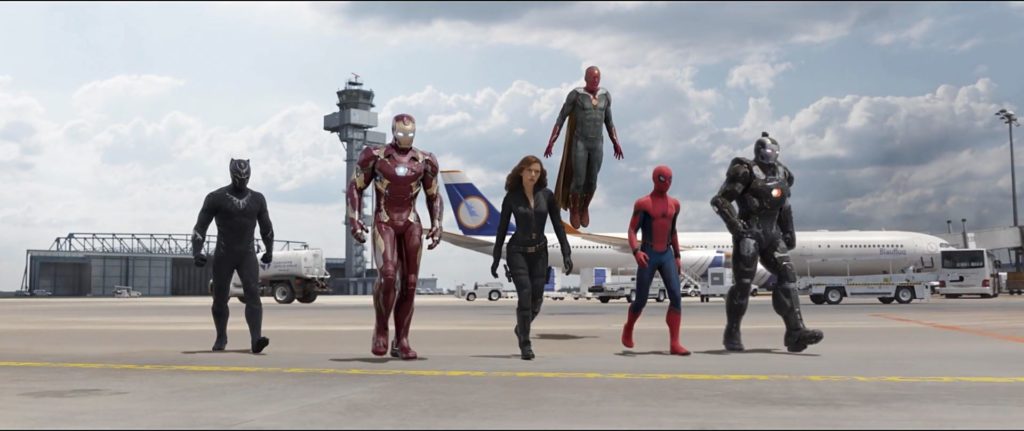 The movie’s effects too are a notch above its predecessors and this is most evident in the MIT presentation sequence where we see a digitally de-aged Robert Downey Jr. relive the final moments with his parents in a slightly altered manner. The company behind the digital de-aging, Lola VFX, are at it again after debuting this method with Ant-Man. The result is that Downey’s younger self appears frighteningly real, lifted right from his early days and this is clearly the start of a trend in MCU movies that we haven’t seen the last of. The Airport Battle has some great CGI as well; most of the Airport itself has been rendered digitally as are several of the characters in the fight including Spider-Man. The movie has the arduous task of balancing out different heroes along with their looks and fighting styles from their individual movies and the visual effects by Weta Digital help sell that effectively.
The movie’s effects too are a notch above its predecessors and this is most evident in the MIT presentation sequence where we see a digitally de-aged Robert Downey Jr. relive the final moments with his parents in a slightly altered manner. The company behind the digital de-aging, Lola VFX, are at it again after debuting this method with Ant-Man. The result is that Downey’s younger self appears frighteningly real, lifted right from his early days and this is clearly the start of a trend in MCU movies that we haven’t seen the last of. The Airport Battle has some great CGI as well; most of the Airport itself has been rendered digitally as are several of the characters in the fight including Spider-Man. The movie has the arduous task of balancing out different heroes along with their looks and fighting styles from their individual movies and the visual effects by Weta Digital help sell that effectively.
By now, everyone’s pretty much familiar with their characters and slip into them with ease. Perhaps the most interesting interpretation has to be Robert Downey Jr.’s portrayal of Tony Stark. Just when you thought he had done it all, Downey comes out triumphant and takes Stark to a very dark place, one where he’s ridden with the guilt of mass slaughter, the pain of losing his parents and not saying his final goodbyes, the frustration of being unable to convince his best friend to see his point of view and the heartbreak of calling it off with Pepper after he was unable to stop tinkering with his suits. At the other end is Chris Evans who by now, has come to embody the character of Captain America like Christopher Reeve did with Superman. He oscillates and is torn apart between his friends Sam Wilson, Tony Stark and Bucky Barnes and finds himself gravitating the most to Bucky, not just because he’s his oldest friend but perhaps because he feels the pangs of loneliness even further after the only other person alive from that time, Peggy Carter, passes away. He carries a fierce determination of not giving up on Bucky with that desperation often reflecting in his performance. On his end, Sebastian Stan plays Bucky like a perfect mix of someone who’s tormented by the brainwashing and someone who was once simply James Buchanan Barnes, a soldier in a war. Clearly all that mind scrambling and wiping out has taken its toll and Stan conveys that both effectively and convincingly, dodging with the question that even though Rogers may get his friend back, will he ever be the same Bucky as he once was?
Anthony Mackie plays Wilson as fiercely loyal to Cap even though he doesn’t take a liking to Bucky, both for all the punches he’s pulled and the fact that he’s encroaching upon his friendship with Cap. Scarlett Johansson is also divided between siding with Rogers who she shared some traumatic experiences during the events of The Winter Soldier and Stark who she started off with and plays the double agent that we’ve come to expect of her. Vision and Scarlet Witch are just beginning to get the hang of things and Paul Bettany and Elizabeth Olsen display a subtle trace of chemistry that hints at the comic book union of their characters. Clint Barton, Scott Lang and Rhodey have what amount to cameos but the actors playing them do justice in their small parts.
The movie was well rewarded at the box-office, which almost treated it like an Avengers 2.5. It went on to make $409 million in the United States and $1.15 billion worldwide, putting Captain America into the billion dollar club of franchises albeit with a lot of help from supporting heroes. It opened to an astounding $179 million in its opening weekend in the US, which is only a few million behind than its Avengers counterparts. Critically, the movie was quite well received although some criticized the lack of deaths in the movie and heralded it as nothing but one giant tease after which things will go back to the way they were. For fans all over though, it is still widely regarded as one of the superior MCU movies of all time. The finale has ramifications that really put the Avengers in a tough spot, which is precisely where someone like Thanos would want them to be before he launches his assault on earth.
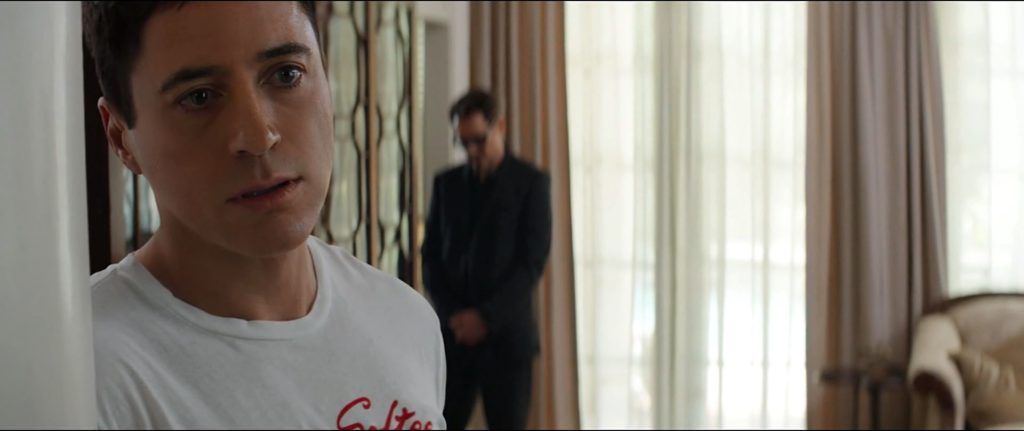 Some would say Marvel Studios turned over a new leaf of sorts with their Phase Three movies. Whereas the studio was not quite accommodating with a lot of its Phase One and Phase Two movies, often going to extreme lengths to cut costs, a lot of it changed with the departure of former Marvel President Ike Perlmutter. Perlmutter was well known for his thrift-centered approach towards making movies, and is said to be the one responsible for such decisions as replacing Terrence Howard with Don Cheadle in Iron Man 2 to save a few million dollars or even arguing in favor of writing Robert Downey Jr. out of Civil War when he demanded a heavy payday. Phase Three was when Kevin Feige ended up becoming the President of Marvel Studios with Perlmutter assigned to oversee Marvel TV. And Feige was able to get Downey to agree to the role, along with striking a historic licensing deal with Sony to rope in Spider-Man, in the interest of giving fans a better story. The fact that a Captain America installment was made with a $250 million budget is something that could have only happened under Feige’s watch.
Some would say Marvel Studios turned over a new leaf of sorts with their Phase Three movies. Whereas the studio was not quite accommodating with a lot of its Phase One and Phase Two movies, often going to extreme lengths to cut costs, a lot of it changed with the departure of former Marvel President Ike Perlmutter. Perlmutter was well known for his thrift-centered approach towards making movies, and is said to be the one responsible for such decisions as replacing Terrence Howard with Don Cheadle in Iron Man 2 to save a few million dollars or even arguing in favor of writing Robert Downey Jr. out of Civil War when he demanded a heavy payday. Phase Three was when Kevin Feige ended up becoming the President of Marvel Studios with Perlmutter assigned to oversee Marvel TV. And Feige was able to get Downey to agree to the role, along with striking a historic licensing deal with Sony to rope in Spider-Man, in the interest of giving fans a better story. The fact that a Captain America installment was made with a $250 million budget is something that could have only happened under Feige’s watch.
Having seen enough of grounded movies, Marvel Studios was about to open up the mystic arts and the cosmic side of its universe in a whole new way. Things were then about to get … Strange.



